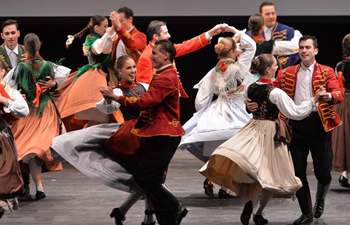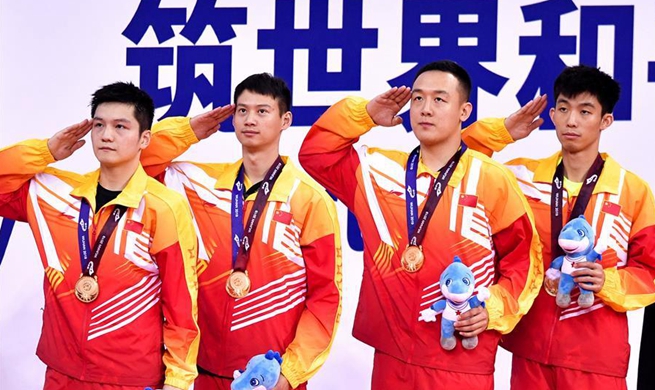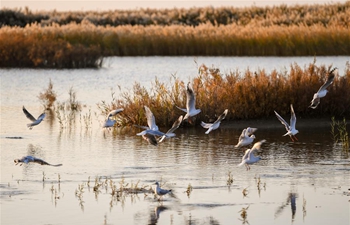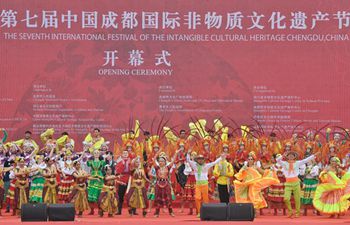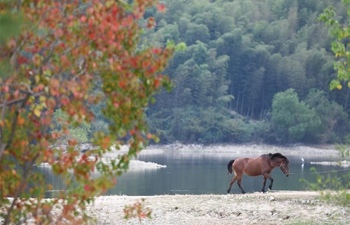CHANGSHA, Oct. 22 (Xinhua) -- The third-generation hybrid rice developed by Yuan Longping, the "father of hybrid rice," and his team underwent its first public yield monitoring from Monday to Tuesday and achieved a major breakthrough in output.
The final yield came to 1,046.3 kg per mu (about 0.07 hectares), based on two plots of land in Qingzhu Village under the city of Hengyang in central China's Hunan Province.
Experts agreed that the rice has a stout stem, fertilizer tolerance, lodging resistance, large spike and more grains.
"One of the most important characteristics of the third-generation hybrid rice is that it has a shorter growing period," said Qian Qian, deputy director of the China National Rice Research Institute.
Qian said some previous high-yielding hybrid rice varieties in China took 160 to even 180 days from sowing to harvesting, while the figure was shortened to around 125 days for the new variety.
"A shorter growth period can reduce the use of pesticides and fertilizers, save resource costs and improve production efficiency," Qian said.
Unlike the previous two generations of hybrid rice which required a large amount of water and fertilizers as well as demanding growing conditions and technological support, the third-generation hybrid rice is easier to be cultivated by ordinary farmers.
The soil, altitude and climate of the test site were not "ideal conditions" carefully selected beforehand but were close to the paddies of ordinary farmers, according to Zhao Bingran with Hunan hybrid rice research center.
The whole process was organized by the Hunan Society of Agronomy under the supervision of experts from the Chinese Academy of Agricultural Sciences, the China National Rice Research Institute, Hunan's agriculture and rural affairs department and multiple Chinese universities.
Yuan, who developed the world's first hybrid rice in 1974, has set multiple world records in hybrid rice yields in previous years.







